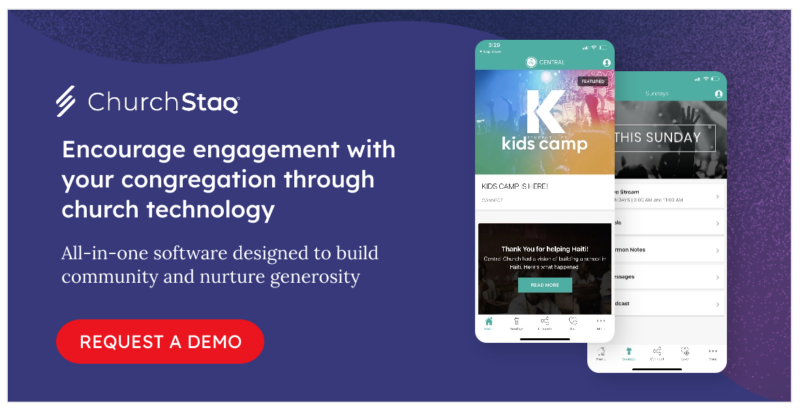
Closing the Back Door: 5 Steps to Address Your Assimilation Challenges
What can churches do to keep people from leaving or just becoming inactive? Here are five steps to help you close "the back door" at your church.
Every church has the same problem. No matter how many new people come through your doors, there are plenty more who leave or never become a consistent part of your church. Years ago Tom Rainer called this assimilation challenge “walking out the back door.”
Assimilation is just as crucial to church growth as increasing first-time visitors. But a lot of churches struggle to “close the back door.” We’ve put together five steps to help you get people plugged into your church.

1. List all the ways people can connect with your church
There are numerous ways someone can get more connected to your church. They could join a small group. They could donate to your ministry. Download your app. Join a class. Or volunteer. Each of these touchpoints strengthens people’s connection to your church, whether they’re a first-time visitor or they’ve been coming off and on for years.
If you want to close the back door, you need to be aware of all the ways someone may interact with your church, and you need to understand how each of those interactions can increase people’s exposure to your church and motivate them to participate in your community.
2. Survey your most active members
In an ideal world, every visitor would become an active, highly involved member of your church. So why not learn more about what that ideal looks like? What are the activities, beliefs, disciplines, and connections your most involved members have in common?
By surveying your members, you’ll discover important knowledge gaps you need to fill about your church, as well as identify the touchpoints that could make the biggest difference in whether someone becomes a consistent part of your community. Be sure to ask them about when they first started attending and find out why they stayed.
3. Prioritize the most effective connections
In most cases, the thing that continually brings people back to a church is the relationships they develop there. Sometimes it happens in a small group, on a regular volunteer team, or through a service project. It can be difficult for people (especially visitors) to develop meaningful relationships during the service, so you need to actively promote the best opportunities you have for relationships to happen.
If you care about closing the back door, you can’t just talk about small groups once a year or even once a quarter. You should mention them regularly, tell people how to get involved, and highlight them in a variety of ways.
Or maybe you have a class, a group, or another opportunity that’s perfect for newcomers where they can connect with other new people without feeling like they’re in over their head or intruding on a close gathering of friends. This should be front and center anytime you address new people in your church.
You also need to think about how to get people to simply come back a second time. If someone only shows up once, that doesn’t give you (or them) much of a chance to build relationships. And that’s where strategic communication is crucial.
4. Create opportunities for communication
If you don’t have a way to communicate with someone, you can’t lead them toward their next best step. Even a tenuous connection with your church is better than no connection at all. The reality is that for newcomers, a well-crafted email series or a relevant app notification can be one of the fastest ways to spark a meaningful connection.
While it might be nice to imagine that visitors and occasional attendees are meeting people left and right from the moment they shake hands with your smiling greeters, many people leave your service without meeting a single person or creating a significant connection.
You need to collect contact information and/or get people plugged into your church app so your church can continue communicating after the service, throughout the week, and in the days to come. Whether that means collecting mailing addresses, email addresses, or phone numbers, or simply driving app downloads, make sure you’re doing everything you can to open the door to ongoing communication.
5. Be consistent, even if people aren’t
Some churches never follow up with visitors, trusting that they experienced enough in a single service to come back on their own. Or once someone comes a few times, a church may assume they’re “in.” But whatever stage people are in on their member journey, you need to communicate with them regularly.
If people only come to services sporadically, you can still reach them consistently with content through your app or email list. And with every push notification, email, or social media post, you can gently nudge them to come back, get more involved, and see the value of your community.





